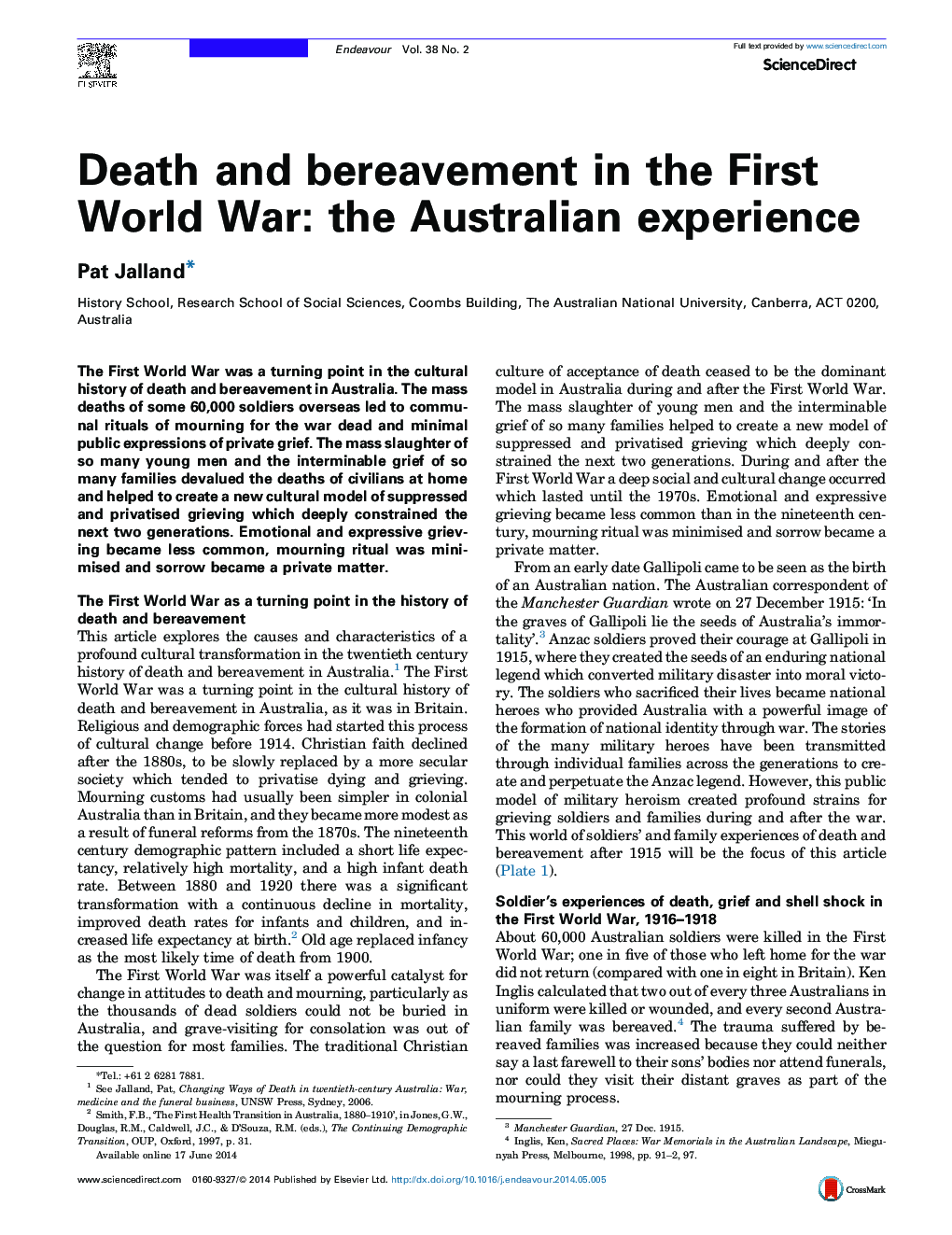| Article ID | Journal | Published Year | Pages | File Type |
|---|---|---|---|---|
| 10527874 | Endeavour | 2014 | 7 Pages |
Abstract
The First World War was a turning point in the cultural history of death and bereavement in Australia. The mass deaths of some 60,000 soldiers overseas led to communal rituals of mourning for the war dead and minimal public expressions of private grief. The mass slaughter of so many young men and the interminable grief of so many families devalued the deaths of civilians at home and helped to create a new cultural model of suppressed and privatised grieving which deeply constrained the next two generations. Emotional and expressive grieving became less common, mourning ritual was minimised and sorrow became a private matter.
Related Topics
Social Sciences and Humanities
Arts and Humanities
History
Authors
Pat Jalland,
